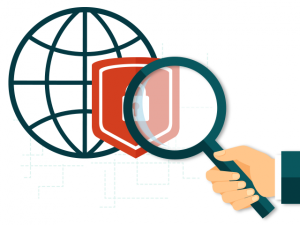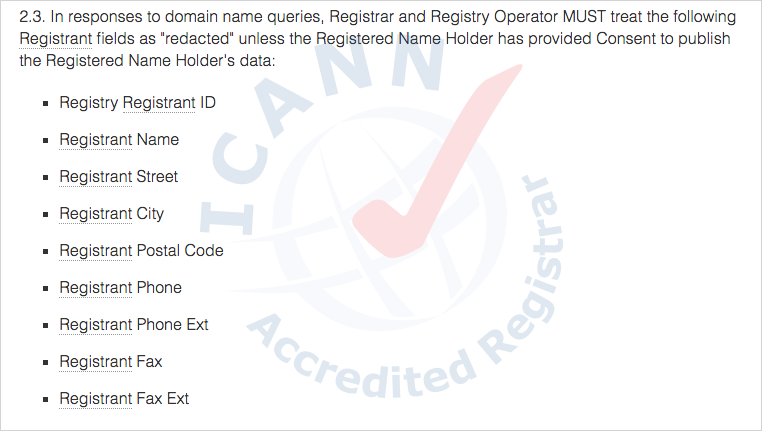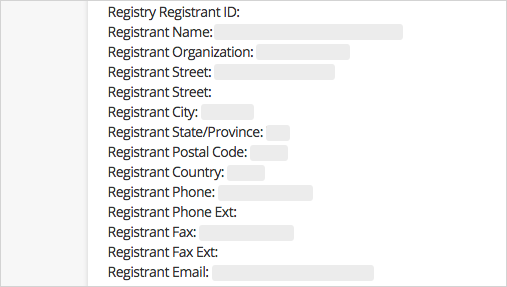Privacy Protected vs GDPR Protected Whois – the key differences

Now that the General Data Protection Regulation (GDPR) of the European Union is in force, domain registries and registrars have been really stringent in their data processing policies so as to ensure full compliance with the new privacy realities.
The new data privacy rules have had the greatest of impact on the Whois – the output of contact details pertinent to a domain name.
The once public data is now no longer available, which has made security-sensitive registrants question the need for a Whois Privacy Service, which has so far been available as an extra privacy feature.
Learn more about the key differences between GDPR-protected and Whois Privacy shielded data so you can make an informed choice about the privacy of your domain details.
What is the GDPR impact on Whois about?
It’s been more than a month since the EU’s General Data Protection Regulation (GDPR) enforced new privacy rules for personal data.
To comply with the regulation, ICANN, the international regulator of domain name registrations, was forced to issue a new WHOIS data specification for generic domains.
The specification in question requires that personal information should be hidden from the WHOIS record, by default.

This in turned forced all registries and ICANN-accredited registrars take measures to put any Whois data that was publicly available at that moment, in the dark.
Due to the new rules, no personal details can now be featured in the Whois information of a domain name unless the registrant has given their explicit consent to data disclosure.
Those details include the name, postal address and email address of the Registrant, Admin and Technical contacts of the Whois.
Although the ICANN specification mandates that the email address of the registrant be replaced by an anonymized email or contact form, some registries have gone even further in their GDPR compliance efforts by not providing any means of contact to the registrant.

This way, it has become really hard for registrants to be approached by interested parties regarding their domain names, if necessary.
Advantages of the Whois Privacy protection service
Despite the new privacy rules, which the GDPR regulation has enforced to keep your data safe, the Whois Privacy Protection service may still be a reasonable option for you.
Here is a list of the key differences between GDPR-protected Whois data and information masked with the Whois Privacy Protection service:
- The Whois Privacy Protection service does not show the registrant’s country and state/province, while the GDPR-protected Whois data does;
- With the Whois Privacy Protection service, we do not share the registrant’s personal details with registries and data escrow agents as required by ICANN (we share ours instead), while the GDPR-protected data is passed on to the respective parties;
- Whois Privacy Protection replaces the registrant’s email in the Whois database with a spam-protected address, which filters out all junk messages and sends the registrant only legitimate communication; the GDPR-protected Whois record will provide a standard online contact form for interested parties to reach the registrant;

NOTE: Due to their stringent approach to GDPR, most ccTLD registries have not provided a way for the registrant to be contacted. Hence, most country-code TLDs do not feature a contact form in their default Whois record.
What should I do if I have a Whois Privacy Protection enabled for my domain?
If you want to ensure full privacy for your domain details while also keeping the door open for interested parties to reach you via a spam protected mailbox, then sticking with the Whois Privacy Protection service is the right choice for you.
If you are fine with the GDPR-compliant protection mandated by the ICANN regulation, then you do not need to renew the Whois Privacy Protection service.
If you are on a recurring contract with us, simply cancel for the respective domain name easily from your Control Panel (the ‘Recurring’ option in the top right-hand corner).
Originally published Friday, June 29th, 2018 at 4:37 pm, updated July 8, 2024 and is filed under Online Security.Tags: ccTLDs, privacy protection

